Sage: Discover the miracle plant for health and healing!
Discover the versatile medicinal plant sage: from traditional uses to active ingredients to modern uses in natural medicine.
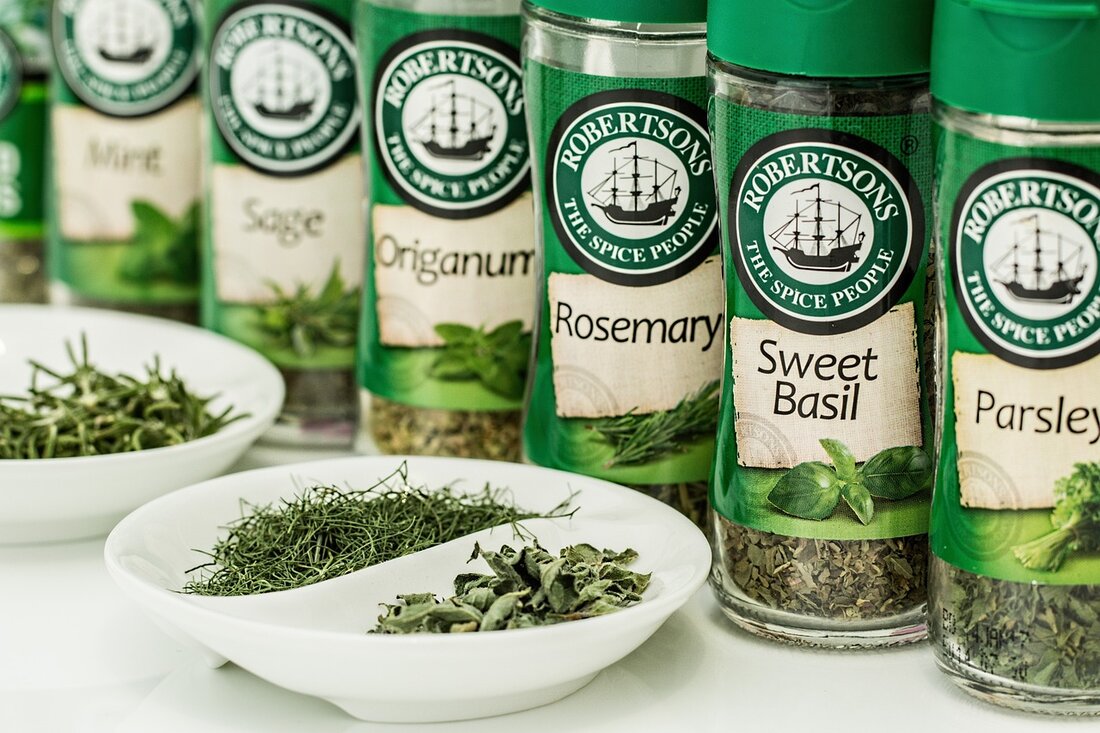
Sage: Discover the miracle plant for health and healing!
Sage, scientifically known as *Salvia officinalis*, is much more than just a culinary herb. This aromatic plant has been valued in natural medicine for centuries and is considered a true all-rounder among medicinal herbs. Its name is derived from the Latin word *salvare*, meaning “to heal” – a reference to its long tradition as a medicine. From relieving sore throats to aiding digestion and promoting mental clarity, sage's uses are impressively diverse. In many cultures, the plant was used not only medicinally but also spiritually, for example to clean rooms or as a symbol of protection. This article delves into the world of sage and highlights how this humble herb continues to play a central role in natural medicine today, combining modern science with traditional knowledge.
Introduction to the medicinal plant sage

Imagine you're walking through a sunny Mediterranean garden and a spicy, earthy scent hits your nose - it's the unmistakable scent of sage that has captivated healers and herbalists for thousands of years. This plant, which is primarily native to southern Europe and Dalmatia, belongs to the mint family and prefers to thrive in warm, wind-protected places on stony, calcareous soil. With a height of up to one meter and purple flowers that shine in May and June, *Salvia officinalis* is not only a feast for the eyes, but also a treasure of natural medicine. Its versatility as a spice and medicinal plant makes it an indispensable companion in traditional medicine, where it has always been valued for its healing properties.
The distribution of sage species is impressive and extends across almost all continents. While *Salvia officinalis* is mainly cultivated in Europe, other species such as *Salvia apiana* can be found in California and Baja Norte or *Salvia aegyptiaca* from the Canary Islands to North Africa and Southeast Asia. Each of these species has its own characteristics, but the medicinal use connects them all. Particularly noteworthy is the cultural significance that sage has in various regions - from spiritual cleansing rituals among indigenous peoples to its use as a protective plant in European traditions. A look at the diversity of species shows how deeply rooted sage is in human history, as can be seen in the comprehensive overview Wikipedia can read.
When it comes to healing powers, sage leaves contain a wealth of active ingredients. With a content of 1.5 to 2.5 percent essential oil, which contains, among other things, thujone, camphor and linalool, as well as bitter and tannins, the plant offers a wide range of possible uses. Their properties range from anti-inflammatory and germicidal to antispasmodic to stomach-strengthening and wound-healing. Sage tea is particularly often used for stomach and intestinal problems, diarrhea or excessive night sweats. The plant also proves to be extremely effective as a gargle for sore throats or inflammations in the mouth and throat, as many traditional recipes prove.
In addition to internal use, sage also finds its place in external care. The firming and clarifying properties make it a popular ingredient in skin care products, for example for treating oily or impure skin. As a bath additive or in aftershave it has a refreshing effect. In addition, sage is valued in gynecology because it has an influence on the female reproductive organs, can regulate menstruation and even support childbirth. These versatile uses make it clear why sage has been indispensable as a medicinal plant for centuries, as well as on the side of Herbalist Oldenburg is described in detail.
Sage plays an important role not only in medicine, but also in cooking. Its intense aroma refines salads, herb butter, cheese as well as fish and meat dishes. As an integral part of the famous “Herbs of Provence”, it brings Mediterranean flair to the plate. This dual role as a medicinal and spice plant shows how closely natural medicine and everyday culture are interwoven. It is also interesting that the leaves can be harvested continuously, with the main cut shortly before flowering and a second cut recommended in August at the latest in order not to weaken the plant.
However, a word of caution is in order when it comes to using sage. The high thujone content in the essential oil can be toxic in large quantities and affect the central nervous system, which in rare cases could lead to convulsions or epileptic seizures. Therefore, the essential oil should only be used externally and in diluted form. These instructions are essential to safely use the plant's benefits and minimize possible risks.
Botanical properties of sage
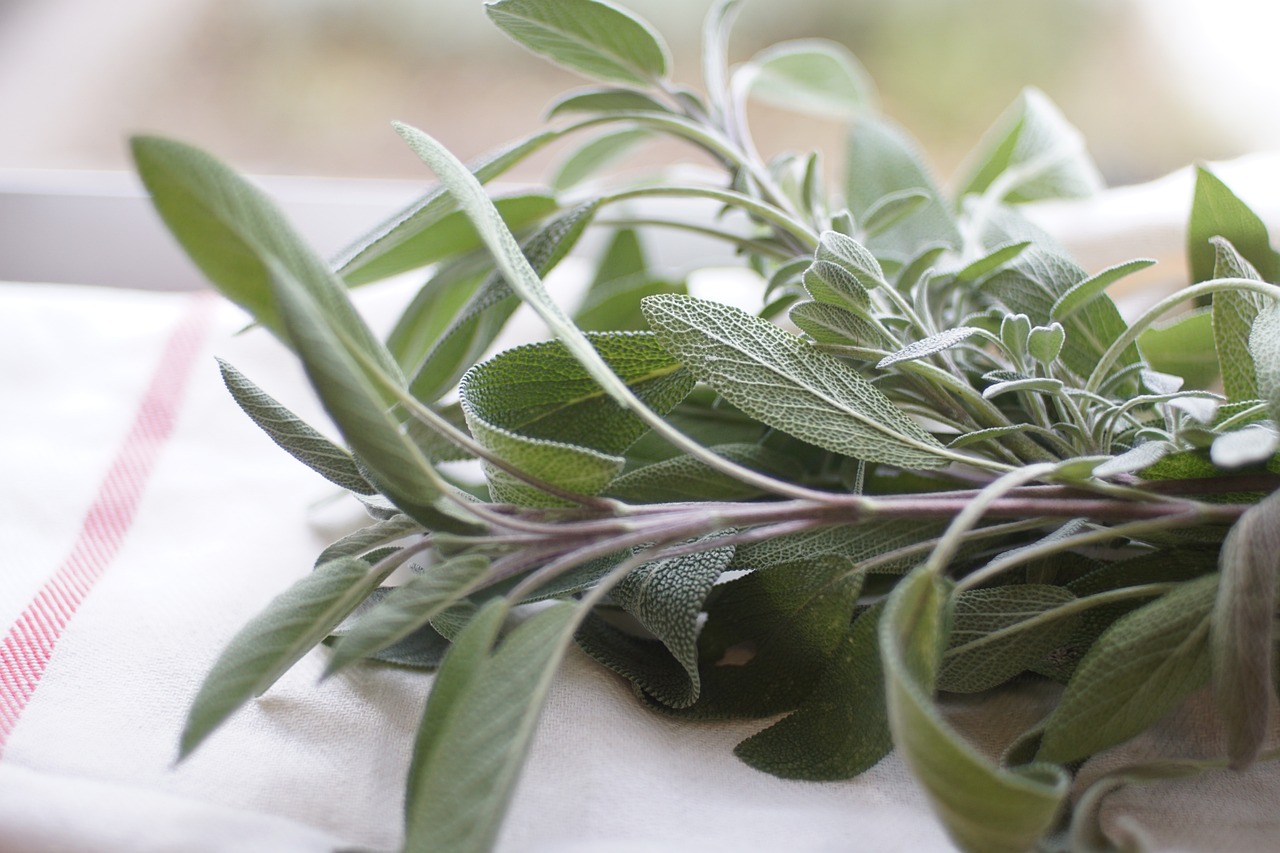
When you wander through the hills of southern Europe on a warm summer day, a bushy herb with velvety leaves and an intoxicating scent often catches your eye. This plant, known as *Salvia officinalis*, belongs to the mint family and is a perennial plant that grows up to one meter in height. Its leaves, grey-green and slightly tomentose, exude an intense, spicy smell, while the purple flowers attract numerous insects in May and June. It prefers to grow in sunny, wind-protected locations on poor, calcareous soil, as is typical for the Mediterranean region, especially in Dalmatia and other parts of southern Europe.
Caring for this robust plant requires little effort, but there are a few aspects to keep in mind to maintain its vitality. Harvesting the leaves can be done continuously, with the main cut recommended shortly before flowering and a second cut no later than August to promote healthy regrowth. This ease of use makes them attractive not only to gardeners, but also to those who want to take advantage of their healing properties. A detailed description of the care and location can be found on the website Herbalist Oldenburg, which offers valuable tips for cultivation.
In addition to the well-known species *Salvia officinalis*, the genus Salvia includes an impressive variety of species that are distributed worldwide. In total, there are over 900 species that thrive from the barren highlands of the Himalayas to the sunny coasts of California. For example, *Salvia alatipetiolata* grows at dizzying altitudes of around 3,800 meters in the Chinese province of Sichuan, while *Salvia apiana*, also known as white sage, is native to the desert regions of Southern California and Baja Norte and has a variety of uses. *Salvia aegyptiaca* is also found in a wide area from the Canary Islands across North Africa to northwest India.
The diversity is also impressive in Africa: *Salvia africana-caerulea* is only found in the South African provinces of the Eastern Cape, Northern Cape and Western Cape, while *Salvia africana-lutea* also occurs in Namibia. Both species are not considered endangered and enrich the local flora. In Central and South America we encounter species such as *Salvia amethystina*, which grows in Colombia and northwest Venezuela, or *Salvia alamosana*, which is only found in the Mexican state of Sonora. This enormous geographical range underlines the ability of the genus to adapt to a wide variety of climatic conditions.
There are also numerous representatives of this plant family in Europe and Asia. For example, *Salvia amplexicaulis* ranges across southeastern Europe and Turkey, while *Salvia aethiopis* occurs from Europe to Central Asia. *Salvia hians* is found in the Himalayas, from Kashmir to Nepal, and *Salvia japonica* is common in Southeast Asia, including Japan and Korea. Each of these species has its own characteristics, be it leaf shape, flower color or preferred growing conditions, making the genus a fascinating object of study for botanists. The site provides a comprehensive overview of the distribution and characteristics of the various species Wikipedia, which serves as a valuable resource.
In addition to the differences in distribution, the possible uses of the species also vary. While some, such as *Salvia aurea* in South Africa, are valued primarily as ornamental plants, others, such as *Salvia ballotiflora* in Texas and northeastern Mexico, are used as herbal teas. This diversity is also reflected in the cultural traditions associated with each species, showing how closely interwoven the relationship between humans and plants is across continents.
Traditional uses of sage
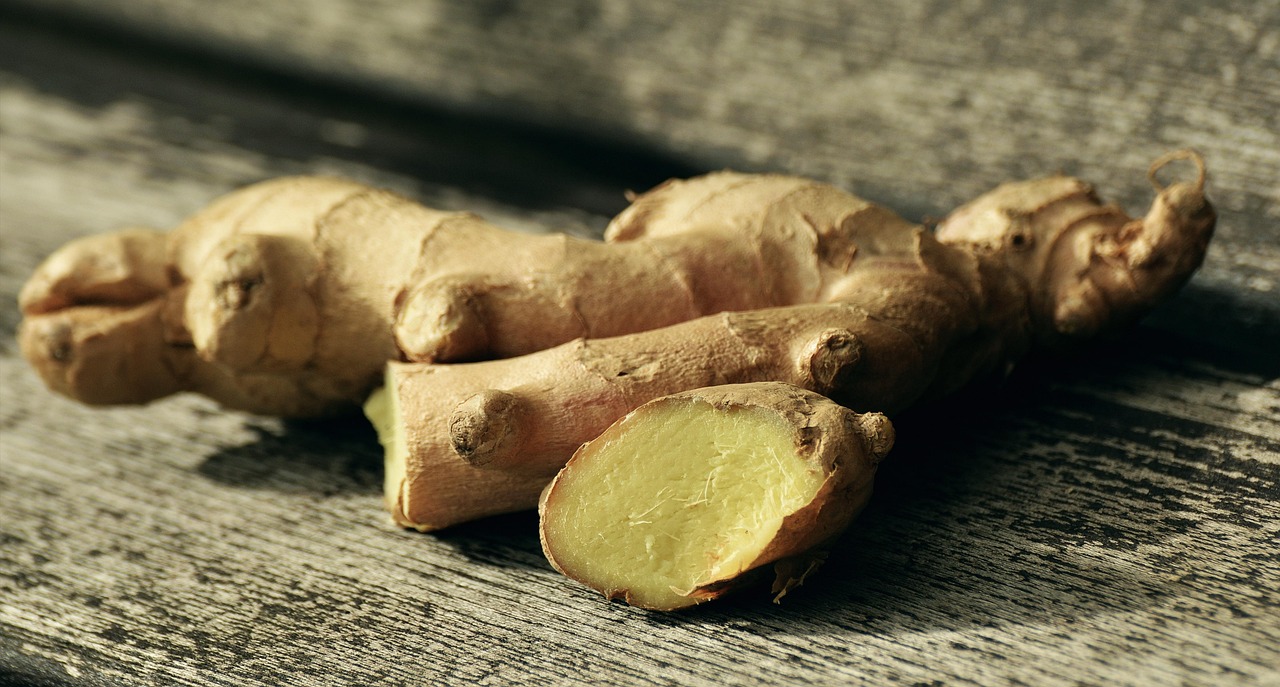
Let's delve into the past, where the scent of sage filled not only gardens, but also temples and sanctuaries, symbolizing healing and protection. Even in ancient times, this herb was considered sacred in the Mediterranean region, a gift of nature that was supposed to ward off illness and prolong life. The ancient Greeks and Romans valued it highly, calling it a fertility enhancer and even using it to combat snake bites. It was mentioned in Roman writings as an indispensable component of the healing arts, a testament to its importance that continues to resonate in historical texts today.
Sage also played a central role in ancient Egypt, particularly in gynecology. There it was used to help with fertility problems, a belief that lasted through generations. Meanwhile, in Europe, Celtic druids used the plant for spiritual rituals to drive away negative energies and provide protection. This mystical connection shows how deeply the roots of sage are anchored not only in medicine but also in spirituality, an aspect that remains noticeable in many cultures to the present day.
In the Middle Ages, sage found its permanent place in the monastery gardens of Europe, not least on the recommendation of Charlemagne, who ordered its cultivation in the famous “Capitulare de villis”. Monks and nuns cared for the plant carefully and used it to treat a variety of ailments, from digestive problems to fever. During this time, sage was often viewed as a panacea, a reputation reflected in ancient herbal books where it was praised as a means of prolonging life.
Beyond the European continent, indigenous peoples of North America also developed a special relationship with sage, especially *Salvia apiana*, the white sage. For many tribes, it was an essential element in purification ceremonies known as “smudging.” The dried leaves were burned to use the smoke as a means of spiritually purifying people and spaces. This practice, which continues today in many communities, highlights the universal appreciation for the plant's cleansing properties.
Sage held a special place in British folklore and was listed as an essential herb in historical cookery and healing books. It found its way into the kitchen, where it refined dishes such as poultry stuffing or sausages, but also into folk medicine, where it was said to have the power to strengthen memory and ward off illness. This cultural anchoring can be seen in old proverbs that emphasize the value of sage for a long life, as can also be seen in the comprehensive presentation Wikipedia (English) can understand.
In Asian regions, where species such as *Salvia japonica* are native, the plant has also been used in traditional healing practices, often in conjunction with other herbs, to promote balance and harmony in the body. While the exact uses varied by region, recognition of its healing properties was a constant that ran through different eras and cultures. This diversity of traditions illustrates how sage served as a bridge between nature and humans across geographical and temporal boundaries.
Active ingredients and ingredients

Behind the inconspicuous leaf of a sage bush lies a veritable treasure trove of bioactive substances that have attracted the attention of healers and researchers alike for centuries. The leaves of *Salvia officinalis* contain a complex interplay of ingredients that are responsible for the diverse health benefits. Particularly prominent is the essential oil, which makes up about 1.5 to 2.5 percent of the plant and contains a mixture of compounds such as thujone, camphor, linalool, terpenes and borneol. These components not only give the herb its characteristic scent, but also an impressive range of effects that are valued in naturopathy.
A key component of the essential oil, thujone, is the focus of scientific research because it has both healing and potentially harmful properties. In small doses it can have antispasmodic and antimicrobial effects, which is why sage is often used for gastrointestinal complaints or as a gargle against inflammation in the mouth and throat. However, at high concentrations, thujone poses a risk of neurotoxic effects that can affect the central nervous system, studies from 2014 and 2017 suggest. This dual nature highlights the need to use sage wisely, especially when it comes to essential oil, which should only be diluted and used topically.
In addition to the essential oil, the leaves also contain bitter substances and tannins, which have an astringent, i.e. contracting, effect. These properties make sage a proven remedy for excessive sweating, such as night sweats or sweats, as well as to support wound healing. Tannins also help reduce inflammation, which explains why sage tea is often recommended for sore throats or skin irritations. These natural compounds act like a gentle shield that supports the body in regeneration and at the same time fends off harmful germs.
Another aspect that makes sage so valuable in natural medicine is its antioxidant properties, which are due to flavonoids and phenolic compounds. These substances help neutralize free radicals in the body, which can reduce inflammatory processes and protect cells from oxidative stress. Such effects are particularly relevant to supporting the immune system and may explain why sage is traditionally used for colds and flu-like ailments. In addition, there is evidence that certain ingredients may have a positive impact on brain function, an area of research that has received increased attention in recent years, according to the site Wikipedia (English) can read.
The large number of bioactive compounds is also reflected in the effect on the digestive tract. Sage promotes bile production and has an anti-flatulence effect, making it a proven companion for digestive problems. At the same time, it supports stomach function through its stomach-strengthening properties, which can provide relief from mild cramps or discomfort. These effects are particularly helpful when the body is out of balance after heavy eating or diarrhea, and show how profound the plant's effect on the organism can be.
The influence of sage on hormonal processes, especially in women, is also interesting. The phytoestrogens it contains can regulate menstruation and have a supportive effect during menopause, for example with hot flashes. Sage is also traditionally used when weaning because it inhibits milk secretion - an effect that is attributed to the interaction of certain ingredients with the hormonal balance. This specific effect makes it clear how specifically the bioactive substances in sage can affect different body systems.
Sage in aromatherapy
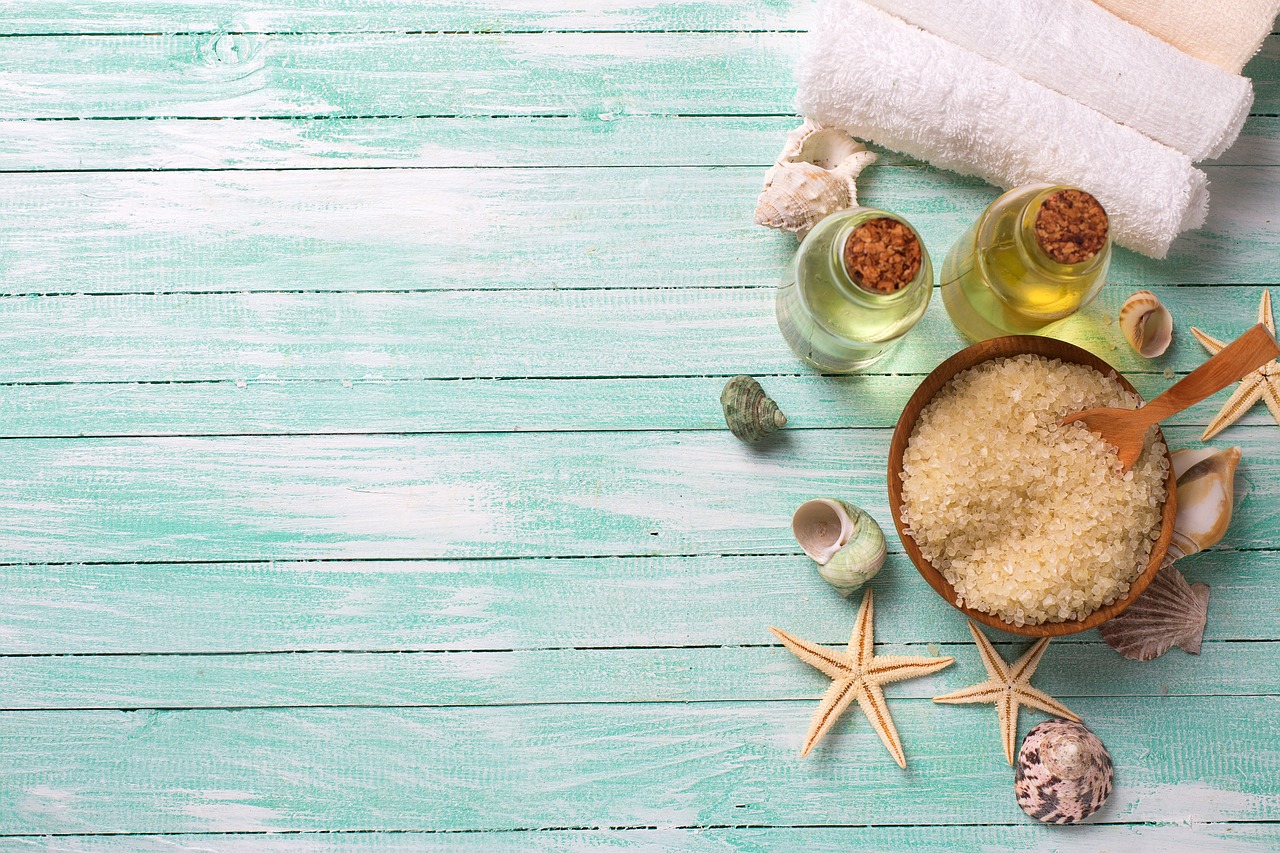
A tiny drop that invigorates the senses and strengthens the body - sage essential oil contains concentrated power that is obtained from the leaves of *Salvia officinalis* through steam distillation. Just one liter of this precious oil requires between 35 and 100 kilograms of plant parts, which underlines its intensity and value. Originally from the Mediterranean region, where the plant has been cultivated for thousands of years, the oil has established itself as a versatile remedy in natural medicine and aromatherapy. It contains a wealth of active ingredients such as thujane, camphor, linalool, flavonoids and rosmarinic acid, which give it its characteristic properties.
Applied externally, sage oil has an impressive effect on the skin and mucous membranes. Thanks to its antibacterial and anti-inflammatory properties, it is ideal for treating skin ulcers, insect bites or minor inflammations. A diluted mixture can be used as a wash or poultice to soothe the skin and promote healing. It is also particularly valued in oral hygiene: one or two drops in a glass of lukewarm water as a gargle solution helps with sore throats, inflamed gums or bad breath by killing germs and relieving irritation.
Another field of application is combating excessive sweating. Sage oil has an antiperspirant effect and can be used in foot baths or homemade deodorants to reduce unpleasant odors and leave you feeling fresh. This property makes it a popular remedy for people who suffer from severe night sweats or hot flashes. It is also used in gynecology, for example to relieve menstrual cycle problems, although it should always be diluted and only used after consulting a specialist.
On a spiritual level, sage oil proves to be a valuable companion in aromatherapy. Its intense, herbaceous scent can be used in fragrance lamps or diffusers to purify the room air and at the same time promote concentration and inner peace. One or two drops are enough to create a meditative atmosphere or to support the mind during demanding tasks. In combination with other essential oils such as lavender or lemon, the effect can be individually adjusted to achieve a harmonious balance between relaxation and activation.
Sage oil can also be used in bath additives for a strengthening and soothing experience. About 30 to 35 drops, mixed with a carrier such as honey or cream, in the bath water provide a relaxing ritual that stimulates blood circulation and relieves tension. This application is particularly suitable after a strenuous day to bring body and mind back into balance. If you want to make the oil yourself, you can prepare a macerate of fresh sage leaves and olive oil, although you must always pay attention to the dosage sparingly to avoid skin irritation.
An important note on safe use: Due to the high thujan content of up to 40 percent, sage oil can have a toxic effect if overdosed and damage the nervous system. It should never be applied undiluted to the skin or mucous membranes and is unsuitable for pregnant women, people with high blood pressure, epileptics, asthmatics and babies and small children. If you are unsure, we recommend consulting a doctor. When purchasing, you should look for natural, organically certified oil in dark glass bottles, as stated in the detailed description Utopia is recommended to ensure quality and safety.
Sage for respiratory diseases

With the first scratchy throat or a persistent cough, many people instinctively turn to tried-and-tested home remedies, and this is exactly where an ancient remedy that has been valued for generations comes into play. Extracted from the leaves of *Salvia officinalis*, sage offers natural support for colds and respiratory diseases, which are particularly common in the cold season. Its use in natural medicine ranges from simple tea preparations to inhalations that promise relief from stuffy noses and irritated bronchi. This versatile plant has proven itself over the centuries as a faithful companion for cold symptoms.
One of the most popular ways to use sage for respiratory problems is to make a tea. The dried or fresh leaves are poured with hot water, allowed to steep for a few minutes and then consumed as a warm drink. This simple application helps to soothe the throat and soothe the urge to cough, as the tannins it contains have an astringent effect, protecting the mucous membranes and reducing inflammation. The tea is often supplemented with honey or lemon to improve the taste and strengthen the effect on the immune system.
Sage is particularly effective as a gargle for sore throats, which often accompany colds. A cooled sage tea or diluted sage essential oil solution can be used directly in the mouth and throat to kill germs and relieve swelling. The antibacterial and anti-inflammatory properties of the plant come into their own here, soothing irritated mucous membranes and making swallowing easier. This method is particularly helpful if your throat is scratchy or if you notice the beginnings of an infection.
Inhalation with sage is ideal for treating blocked airways. Fresh or dried leaves are placed in a bowl of hot water so that the rising steam releases the essential oils. When inhaled under a towel, these vapors can moisten the nasal passages, loosen mucus, and make breathing easier. Inhalation is particularly useful for colds with a runny nose or mild bronchitis, as it gently opens the airways and reduces the urge to cough. The substances it contains, such as camphor and linalool, contribute to the expectorant effect, which makes coughing up easier.
Sage essential oil can also be a valuable supplement for respiratory diseases when used in the correct dosage and dilution. One or two drops in a diffuser or aroma lamp spread an aromatic scent that purifies the air in the room and supports the respiratory tract at the same time. Alternatively, the oil can be mixed with a carrier oil and applied to the chest or back to stimulate blood circulation and provide a warming effect that is beneficial for coughs and colds. However, it is important to observe the precautionary measures, as the high thujone content poses risks if used improperly, as on the site Wikipedia (English) is mentioned.
The antioxidant properties of sage, which are due to flavonoids and phenolic compounds, also support the immune system in the fight against cold viruses. By neutralizing free radicals, the plant can help dampen inflammatory processes in the body, which is particularly beneficial for flu-like symptoms. This supportive effect makes sage a holistic remedy that not only relieves symptoms but also strengthens the body's defenses to promote faster recovery.
Sage for digestive health
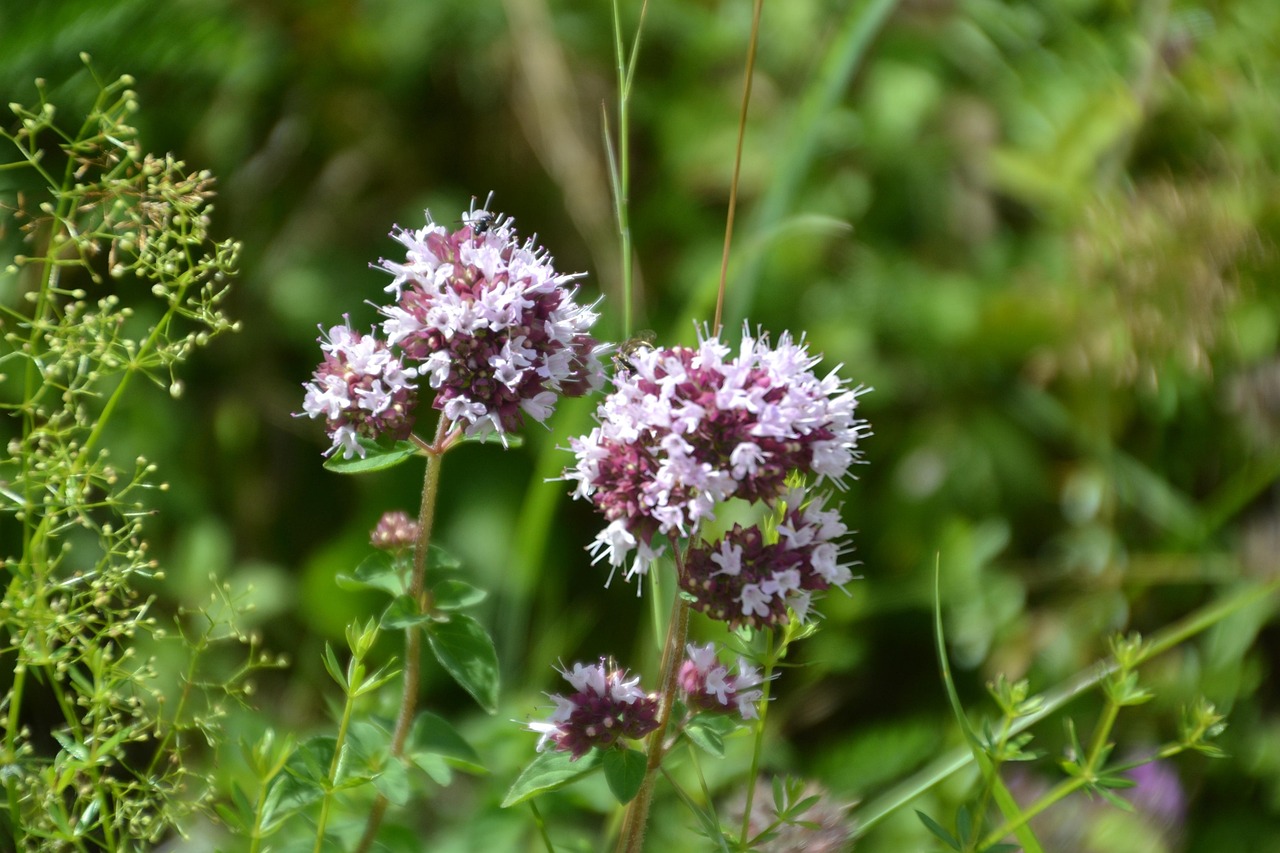
An unpleasant rumbling in the stomach or a feeling of fullness after eating - digestive problems can have a significant impact on everyday life, but nature has a gentle solution. For centuries, *Salvia officinalis* has been highly valued in natural medicine to relieve gastrointestinal complaints and restore balance in the digestive system. This aromatic plant from the Mediterranean region, which thrives in warm, wind-protected locations on calcareous soil, offers natural support with its diverse active ingredients for a number of complaints affecting the stomach and intestines.
The most common way to use sage for digestive problems is to make a tea. Fresh or dried leaves are poured with hot water and allowed to steep for a few minutes before being consumed as a warm drink. This simple application has a stomach-strengthening effect and can provide relief from mild cramps, bloating or discomfort after heavy meals. The bitter substances it contains stimulate the production of digestive juices, while the essential oils, such as camphor and linalool, have an antispasmodic effect and thus relax the muscles of the gastrointestinal tract.
Sage is particularly helpful for flatulence and a bloated stomach. Its anti-flatulence properties help the body break down excess gases and reduce the unpleasant feeling of pressure. A tea made from sage leaves, often in combination with other digestive herbs such as fennel or chamomile, can quickly bring relief. This effect makes the plant a proven remedy after rich or difficult-to-digest foods that put strain on the intestines.
Sage can also help with diarrhea, a common gastrointestinal complaint. The tannins in the leaves have an astringent effect, which soothes the intestinal mucous membranes and reduces fluid loss. Consuming sage tea regularly over a short period of time can help solidify stools and restore normal bowel function. However, it is important to drink enough fluids to avoid dehydration and to see a doctor if symptoms persist.
Sage also promotes bile production, which supports fat digestion and can be helpful for complaints such as liver or gallbladder disorders. This property is particularly useful when the body is overwhelmed by a high-fat diet, as the increased bile activity makes it easier to break down fats, thus reducing the feeling of fullness. A cup of sage tea after a meal can serve as a gentle support to stimulate digestion and banish a sluggish feeling.
For a more intensive effect, a sage tincture can be used, which is prepared from the leaves in a ratio of 1:4 with 75 percent alcohol and has to steep for around 10 to 14 days. This tincture, taken diluted in small quantities, offers a concentrated form of the active ingredients and can quickly help with acute gastrointestinal complaints such as cramps or diarrhea. Detailed instructions for production and use can be found on the website Herbalist Oldenburg, which provides valuable information on safe dosage.
An important note on use: While sage is helpful for many digestive problems, it should be consumed with caution, especially in the form of essential oil or highly concentrated preparations. The high thujone content can have a toxic effect in large quantities and affect the central nervous system, which is why internal use should always be carried out in moderation and ideally after consultation with a specialist. This caution applies especially to people with sensitive stomachs or existing digestive tract diseases.
Sage as an antioxidant

Hidden in the inconspicuous, gray-green leaves of a Mediterranean shrub lies a powerful weapon against invisible enemies that burden our bodies. *Salvia officinalis*, with its natural ingredients, offers valuable protection against oxidative stress and inflammation, two processes that play a role in the background of many chronic diseases. This medicinal plant, which has been valued in natural medicine for centuries, contains a wealth of bioactive substances that can protect cells from damage and dampen inflammatory reactions in the body. Their effect goes far beyond the aromatic scent and makes them an important ally for health.
Oxidative stress occurs when there is an imbalance between free radicals and antioxidants in the body. Free radicals, aggressive molecules caused by environmental factors such as air pollution, stress or unhealthy diet, can damage cells and contribute to the development of diseases such as cardiovascular disease or cancer. Sage contains a high concentration of flavonoids and phenolic compounds that act as powerful antioxidants. These substances neutralize free radicals by donating electrons to them without becoming unstable themselves, thereby protecting cells from oxidative damage.
The antioxidant effects of sage support the immune system and can slow down the aging of cells. In particular, the rosmarinic acid contained in the leaves, a phenolic compound, has been shown in studies to be extremely effective in combating oxidative stress. By regularly consuming sage tea or using extracts, the body can be strengthened to better deal with daily stress caused by environmental toxins or metabolic processes. This protective property makes the plant a valuable companion in a world that is increasingly characterized by harmful influences.
In addition to combating oxidative stress, sage plays a significant role in reducing inflammation. Chronic inflammation in the body, often triggered by stress, infections or unhealthy lifestyles, is a common cause of diseases such as arthritis, diabetes or gastrointestinal problems. The anti-inflammatory properties of sage are based on a combination of essential oils, flavonoids and tannins that dampen inflammatory processes at the cellular level. This effect can help relieve swelling and promote tissue regeneration.
There are many uses of sage for inflammatory complaints. A tea made from the leaves can be taken internally to reduce systemic inflammation, for example in the case of mild gastrointestinal complaints or rheumatic pain. Applied externally, for example as a poultice or in the form of diluted essential oil, sage can soothe skin inflammation or small wounds. The astringent effect of the tannins also supports healing by pulling the skin together and warding off harmful germs, which increases the anti-inflammatory effect.
What's interesting is that sage's antioxidant and anti-inflammatory properties often go hand in hand. Neutralizing free radicals prevents the development of inflammation, as oxidative damage often triggers inflammatory reactions. This double protective effect makes sage a holistic remedy in natural medicine that not only combats symptoms, but also addresses their causes. A detailed description of the active ingredients and their applications can be found on the website Herbalist Oldenburg, which provides valuable insight into the plant's healing properties.
However, sage should be taken with caution, especially when using essential oil or highly concentrated preparations. The high thujone content can be toxic in large quantities, which is why a moderate dosage and ideally consultation with a specialist are recommended. This caution applies especially to people with sensitive organisms or existing health problems in order to safely use the positive effects of the plant.
Ways to prepare sage

The aromatic essence of a Mediterranean garden can be brought into your own kitchen or medicine cabinet in just a few steps to benefit from the healing powers of nature. *Salvia officinalis*, an herb with a centuries-old tradition in natural medicine, can be prepared in various forms to make optimal use of its active ingredients. Whether as a soothing tea, concentrated tincture, or versatile ingredient in other applications, proper preparation is crucial to enjoying the benefits of sage safely and effectively. Here are practical tips on how to integrate this remedy into everyday life.
Both fresh and dried leaves are suitable for preparing a sage tea that helps with colds, stomach problems or excessive sweating. About one to two teaspoons of dried or two to three fresh leaves are used per cup. Pour boiling water over them and let them steep for about 10 minutes so that the essential oils and tannins can develop. Then strain the leaves and drink the tea warm, if necessary, refine with honey or lemon to soften the taste. This method is particularly suitable for sore throats or digestive problems, as the heat also has a calming effect.
The tea can be used as a gargle for inflammation of the mouth and throat after it has cooled down. Simply prepare a cup of sage tea, let it cool and gargle with it several times a day to benefit from its antibacterial effects. Alternatively, one to two drops of sage essential oil can be added to a glass of lukewarm water, always being careful not to swallow the solution as the oil can be toxic in concentrated form. This application relieves irritation and supports the healing of gum inflammation or hoarseness.
For a more intensive effect, for example for chronic complaints or to support digestion, a sage tincture is recommended. To do this, fresh or dried sage leaves are mixed with 75 percent alcohol in a ratio of 1:4 and left to steep in a cool, dark place for 10 to 14 days. After straining, the tincture can be taken in small amounts, about 10 to 20 drops diluted in a glass of water. This method delivers a concentrated dose of the active ingredients, but should be used sparingly and only after consulting a specialist, as the high thujone content poses risks in the event of an overdose.
Sage can also be used as an inhalant, especially for respiratory problems. To do this, place a handful of fresh or dried leaves in a bowl of hot water, lean your head over them, and cover with a towel to trap the steam. Breathe deeply for about 5 to 10 minutes to allow the essential oils to moisten the nasal passages and loosen mucus. This application is ideal for colds or nasal congestion, taking care to protect the eyes and not choose the temperature of the water too hot to avoid burns.
When used externally, sage can be used as a poultice or bath additive to relieve skin inflammation or stimulate blood circulation. To make a poultice, brew a strong sage tea, let it cool, soak a cloth in it and place it on the affected area. For a strengthening bath, mix about 30 to 35 drops of sage essential oil with a carrier such as honey or cream and add to the bath water. This method relaxes the body and supports skin regeneration, but should always be done with diluted oil to avoid irritation.
Care must be taken when purchasing and storing sage to ensure quality. Dried leaves or ready-made tea are available in pharmacies, health food stores or online, although attention should be paid to organic quality to avoid pesticide residues. Fresh leaves can be harvested from your own garden, ideally shortly before flowering, when the active ingredient content is at its highest. The site provides a helpful overview of preparation and sources of supply HealthyFit, which provides detailed information on how to use it correctly.
An important note on safe use: Sage should be consumed in moderation, as an overdose can lead to side effects such as rapid heartbeat, cramps or dizziness. Pregnant women, small children and people with certain previous illnesses such as high blood pressure or epilepsy should especially avoid consumption or seek medical advice. This caution applies especially to essential oil, which should only be diluted and used externally to avoid toxic reactions.
Sage in modern natural medicine

New findings from laboratories and clinics worldwide are shedding fresh light on an ancient remedy that is receiving increasing attention in modern complementary medicine. *Salvia officinalis*, valued for its healing properties for centuries, is now the focus of current research that combines traditional knowledge with scientific precision. The research covers a wide range of potential applications, from supporting cognitive function to combating inflammation, and reflects a growing trend to incorporate botanicals into integrative healthcare.
One promising area of research focuses on the effects of sage on brain function. Studies from 2014 and 2017 have shown that extracts from *Salvia officinalis* and related species such as *Salvia lavandulaefolia* can inhibit the enzyme that breaks down acetylcholine - a substance crucial for memory and learning. This effect could play a role in the treatment of cognitive impairments, such as Alzheimer's or age-related forgetfulness. These results suggest that sage could be used not only as a traditional home remedy, but also as a potential component of modern therapies to support mental health.
Another focus of current research is on the antioxidant and anti-inflammatory properties of sage. The flavonoids and phenolic compounds contained in the leaves, especially rosmarinic acid, are being intensively studied because they can neutralize free radicals and dampen inflammatory processes in the body. These properties make sage a candidate for the prevention and treatment of chronic diseases such as cardiovascular problems or diabetes, in which oxidative stress and inflammation play a central role. Such findings promote the use of sage in complementary medicine as a supportive agent alongside conventional therapies.
Sage's antimicrobial properties, which are due to its essential oils such as thujone and camphor, are also gaining attention. Recent research shows that sage extracts may be effective against a variety of bacteria and viruses, making it a potential natural anti-infection agent. Particularly in the area of oral health, for example in the treatment of gum inflammation or bad breath, sage is increasingly being tested in clinical studies to evaluate its effectiveness as an alternative or supplement to chemical preparations. These developments could advance the integration of sage into dental products or therapies.
An emerging trend in complementary medicine is the use of sage to support hormonal balance, particularly in women. Current studies are examining the effects of phytoestrogens in sage on menopause symptoms, such as hot flashes or night sweats. Early results suggest that sage tea or extracts may provide gentle relief without the risks of synthetic hormone supplements. This approach reflects the growing desire to develop natural alternatives for gynecology and positions sage as a promising agent in this area.
In addition to its medicinal uses, sage's role in aromatherapy and mental health is also gaining importance. Research suggests that the scent of sage oil, rich in linalool, may have a calming effect on the nervous system, reducing stress and anxiety. Clinical trials are currently testing how sage, when inhaled or applied topically, could help improve well-being, particularly when combined with other essential oils. This development underlines the trend of using herbal remedies holistically to support both body and mind.
A look at the scientific literature shows that, despite the promising results, caution remains necessary. The high thujone content in sage extracts can have neurotoxic effects, so dosage and use must be carefully monitored. These concerns are being addressed in current studies to develop safe guidelines for use in complementary medicine. The site provides a comprehensive overview of the properties and potential risks of sage Wikipedia, which serves as a valuable resource for further information.
The growing popularity of sage is also reflected in the increasing demand for standardized preparations such as capsules, extracts or tea blends, which are being used more and more frequently in modern natural medicine. This trend shows how traditional medicinal plants are finding new avenues into healthcare through scientific validation and suggests that sage could play an even greater role in complementary medicine in the coming years.
Safety aspects and side effects

A small plant with a big impact can be a blessing for the body and mind, but its power requires respect and care when used. *Salvia officinalis*, a valued remedy in naturopathy, has numerous benefits, but also potential risks that should not be underestimated. Safe use requires an understanding of proper dosage, forms of administration, and possible interactions to maximize positive effects and avoid unwanted side effects. This section highlights what should be taken into account when using sage.
A key point in safe use is dosage, especially when taken internally. Sage tea, one of the most common forms, should be consumed in moderation—typically no more than two to three cups daily for a limited period of time. An overdose can lead to symptoms such as a racing heart, hot flashes, dizziness or cramps, which is due to the high content of thujone, a component of the essential oil that can be toxic in large quantities. For this reason, it is advisable not to use sage for long periods without interruption and to consult a professional if you are unsure.
Sage essential oil requires special care and should only be used externally and in diluted form. Undiluted, it can cause skin irritation or allergic reactions, and taking it internally should be strictly avoided due to the high concentration of thujone, as it can affect the central nervous system and, in rare cases, trigger epileptic seizures. For external applications, such as bath products or compresses, the oil should always be mixed with a carrier such as olive oil or cream to protect the skin.
Certain groups of people should use sage with particular caution or avoid it entirely. Pregnant women should avoid sage tea or supplements because the plant can induce labor and suppress milk flow, which is problematic during pregnancy and breastfeeding. Sage is also unsuitable for small children, people with epilepsy, high blood pressure or asthma, as the active ingredients could cause cramps or other undesirable reactions. If you have existing health problems or uncertainties, we recommend consulting a doctor or alternative practitioner in order to rule out individual risks.
Possible drug interactions are another important aspect to consider. Sage can increase the effects of antihypertensive drugs because it itself can have a relaxing and antihypertensive effect. It could also interact with sedatives or anticonvulsants because the ingredients affect the central nervous system. People who regularly take medication should therefore seek medical advice before using sage - especially in the form of tinctures or concentrated extracts - to avoid dangerous interactions.
Allergic reactions are rare, but not impossible. Some people are sensitive to the ingredients in sage, which can manifest as skin rashes, itching, or respiratory symptoms, especially when in contact with essential oil or fresh leaves. A skin test before large-scale application or a gradual approach to taking small amounts can help to detect such reactions at an early stage. If you show signs of an allergy, you should stop using it immediately and seek medical help if necessary.
The quality of the sage used also plays a crucial role in safety. Products should ideally come from organic farming to avoid pesticide residues or other pollutants. When buying essential oil, look for natural, organically certified versions in dark glass bottles to prevent contamination or loss of quality due to light. The site provides a comprehensive overview of the properties and potential risks of sage Herbalist Oldenburg, which provides valuable information on safe use and storage.
Sage should be stored in such a way that the active ingredients are preserved. Dried leaves or finished tea blends should be stored in a cool, dry place in airtight containers to prevent moisture and mold growth. Fresh leaves can be stored briefly in the refrigerator or frozen to extend their shelf life. Careful handling and storage will help ensure the potency and safety of the herb.
Conclusion and outlook

From the sunny hills of the Mediterranean to the laboratories of modern science, a humble herb has endured an impressive journey that demonstrates its versatility and healing power. *Salvia officinalis* has established itself as an indispensable remedy in natural medicine for centuries, with uses ranging from relieving respiratory problems to supporting digestion and combating oxidative stress. Its active ingredients, including essential oils, flavonoids and tannins, provide a wide range of health benefits that are both traditionally and scientifically recognized. This section summarizes the key findings and looks at the promising prospects that the future holds for this remedy.
The historical significance of sage is deeply rooted in various cultures, where it was used not only as a medicinal plant but also as a spiritual symbol. From the ancient Greeks and Romans, who used it to promote fertility, to the indigenous peoples of North America, who used *Salvia apiana* in purification rituals, there is universal appreciation for its properties. These traditions form the basis for modern use, which has established sage as a remedy for sore throats, digestive problems, and excessive sweating, often in the form of teas, tinctures, or essential oil.
On a biochemical level, sage impresses with its abundance of active components that have anti-inflammatory, antimicrobial and antioxidant effects. These properties make it a valuable companion for colds, skin inflammations and hormonal imbalances, especially in menopausal women. Research has also provided evidence that sage may support cognitive function by inhibiting enzymes responsible for memory loss, opening new avenues for the treatment of neurodegenerative diseases.
Safe use remains a key consideration, as the high content of thujone in concentrated forms such as essential oil poses risks, including neurotoxic effects in the event of overdose. Particular caution is required for pregnant women, people with epilepsy or high blood pressure, and drug interactions should always be taken into account. Nevertheless, when used in moderation and prepared correctly, sage offers a gentle, natural alternative or supplement to conventional therapies, as numerous examples of use show.
A look into the future of sage research promises exciting developments as scientists worldwide continue to explore the possibilities of this herb. Current studies are focusing on standardized extracts that allow for more precise dosing and could more accurately assess effectiveness in specific diseases such as Alzheimer's or chronic inflammation. Integration into dental products or cosmetic applications is also becoming increasingly important as sage's antimicrobial and skin-tightening properties open up new markets.
Another area of research is the study of sage in mental health, particularly its calming effects through aromatherapy. With increasing interest in holistic approaches, sage-based therapies for stress management or anxiety reduction could increasingly come into focus. The site offers a valuable resource for current information and background information on the plant Wikipedia, which provides a comprehensive overview of the diversity of species and their applications.
In addition, the sustainable cultivation and processing of sage could become more important as the demand for organic and locally produced medicinal plants increases. Advances in agricultural technology and active ingredient extraction could help improve the quality and availability of sage products while minimizing environmental impact. These developments indicate that sage will remain a central component of naturopathy in the coming years, with potential for innovative applications and therapeutic approaches.
Sources
- https://de.wikipedia.org/wiki/Salbei
- https://kraeuterei-oldenburg.de/produkt/salbei-salvia-officinalis/
- https://en.m.wikipedia.org/wiki/Salvia_officinalis
- https://de.m.wikipedia.org/wiki/Salbei
- https://oelerini.com/salbeioel
- https://utopia.de/ratgeber/salbeioel-wirkung-und-anwendung-des-aetherischen-oels_68595/
- https://www.gesundfit.de/artikel/salbeitee-9906/
- https://www.ichkoche.de/salbei-rezepte/

 Suche
Suche
 Mein Konto
Mein Konto